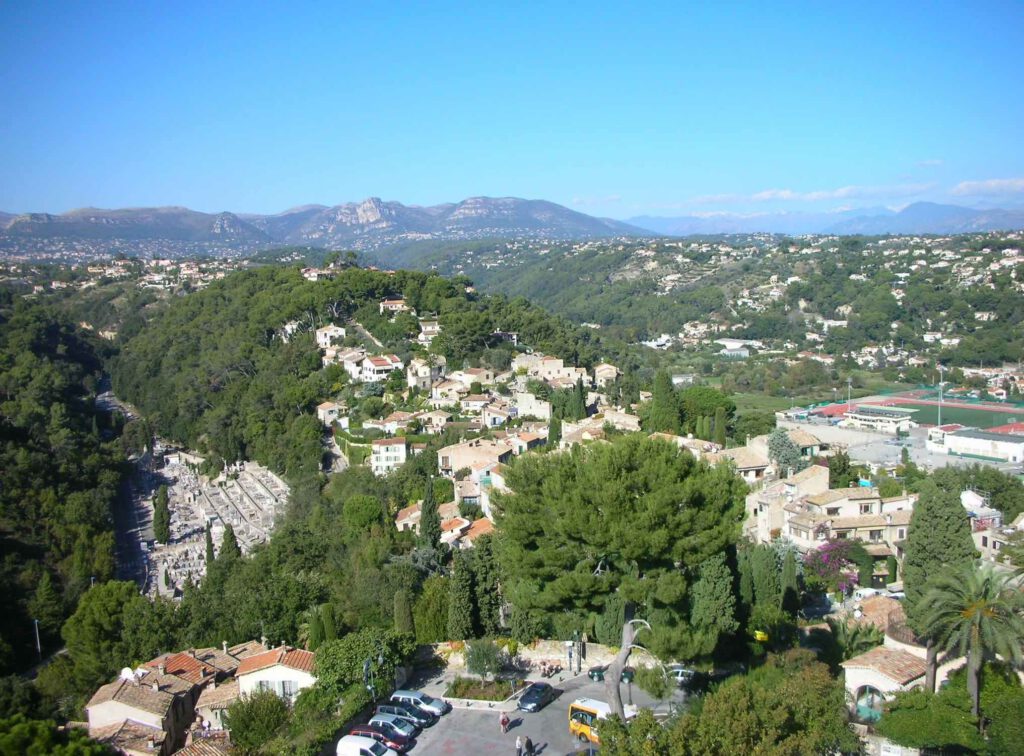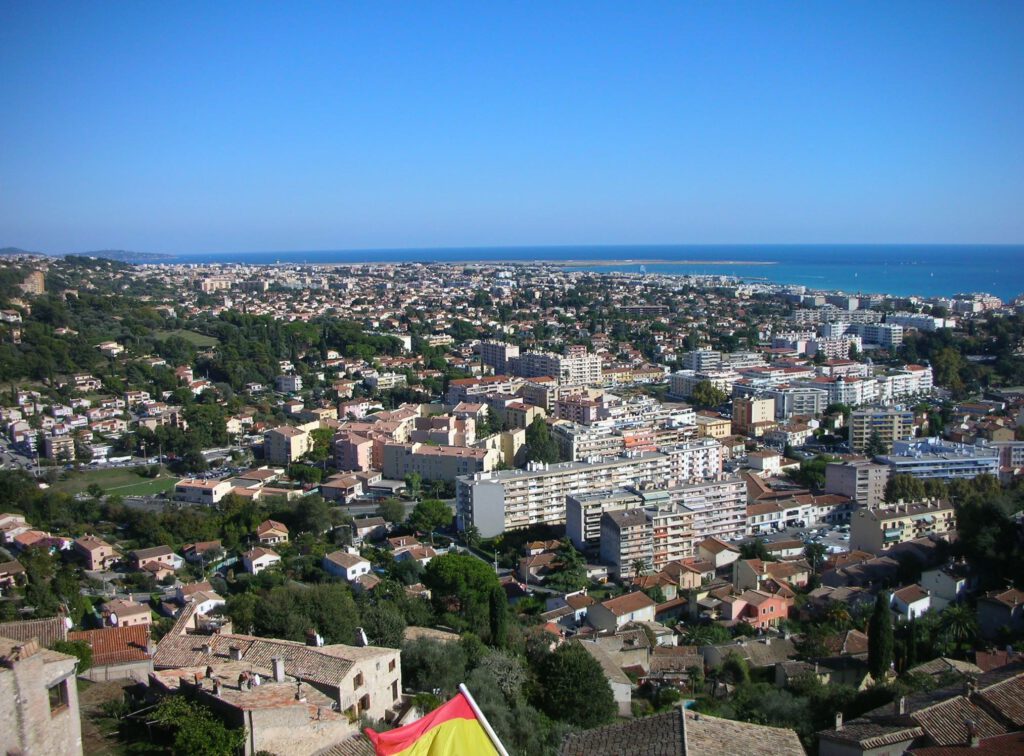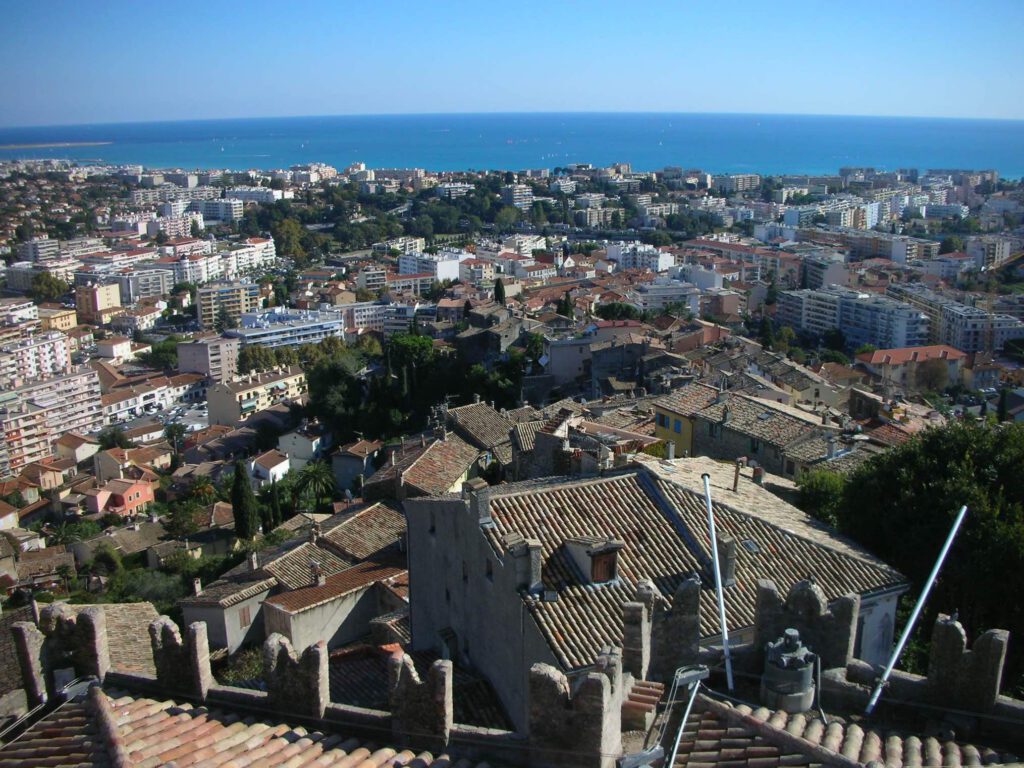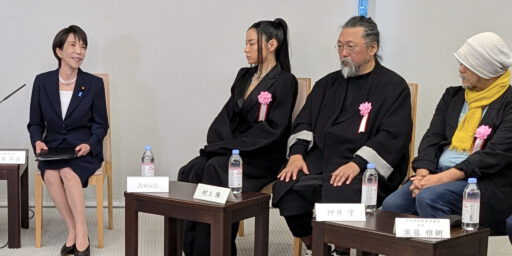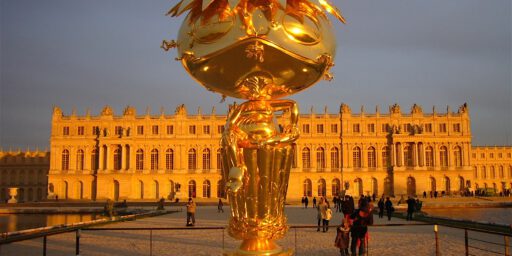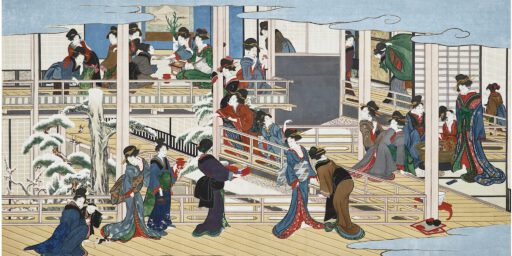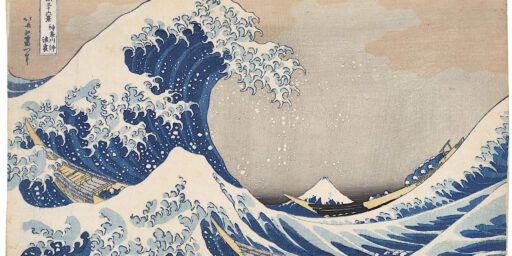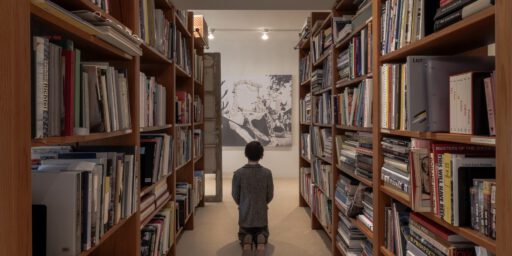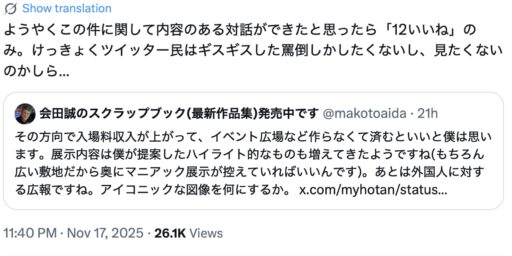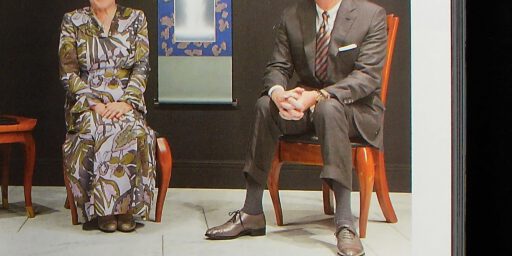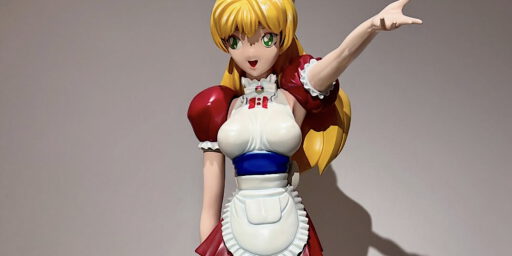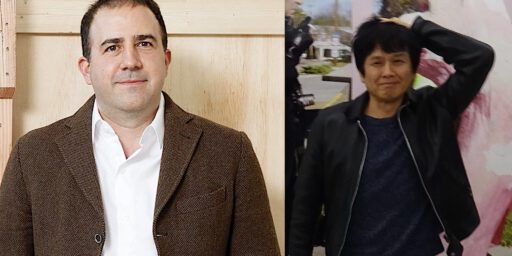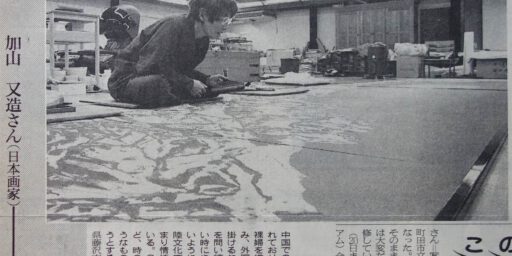藤田嗣治・Léonard Foujita・レオナール・フジタ PETIT ÉCOLIER EN BLOUSE NOIRE, 1918, oil on canvas, back: à Cagnes 1918

It’s corona-time, relaxing time. Bidding shift amongst collectors are the new normal. By checking a newspaper’s website today, I was attracted by the advertisement of Sotheby’s, showing a famous 藤田嗣治・Léonard Foujita・レオナール・フジタ painting, which I had encountered twice: 2016 “Foujita” in the Kawamura Museum, Chiba, Japan and 2018 “Foujita” in Paris, Musée Maillol. AI-related propaganda on news-websites, – we’ve to endure and can’t escape because you’re forced to un-lock the ad-blocker. Surprisingly, I found eight works by Foujita for sale, which one rarely discovers. I think, it’s worth to up-load the auction info here on ART+CULTURE, as my text about Foujita remains popular amongst the readers. Some may remember, that I went to beautiful, sunny Cagnes-sur-Mer, in Southern France, to encounter Foujita’s world. In this regard, I do have a sentimental feeling towards everything what comes from Cagnes & Foujita. Really happy to see this painting in the collector’s original frame. Please enjoy, together with the other works up for sale. The up-date reveals several behind-the-scene-stories, including the fatal relationship between Léonard Foujita, Amedeo Modigliani and Jeanne-Hebuterne.
Collection Jacques et Claude Rohault de Fleury
https://www.sothebys.com/en/buy/auction/2020/collection-claude-et-jacques-rohault-de-fleury
藤田嗣治・Léonard Foujitaの作品との出会い
Encountering the works by Léonard Tsuguharu Foujita
https://art-culture.world/articles/foujita-tsuguharu-leonard-tsuguharu-foujita-kimiyo-藤田嗣治/
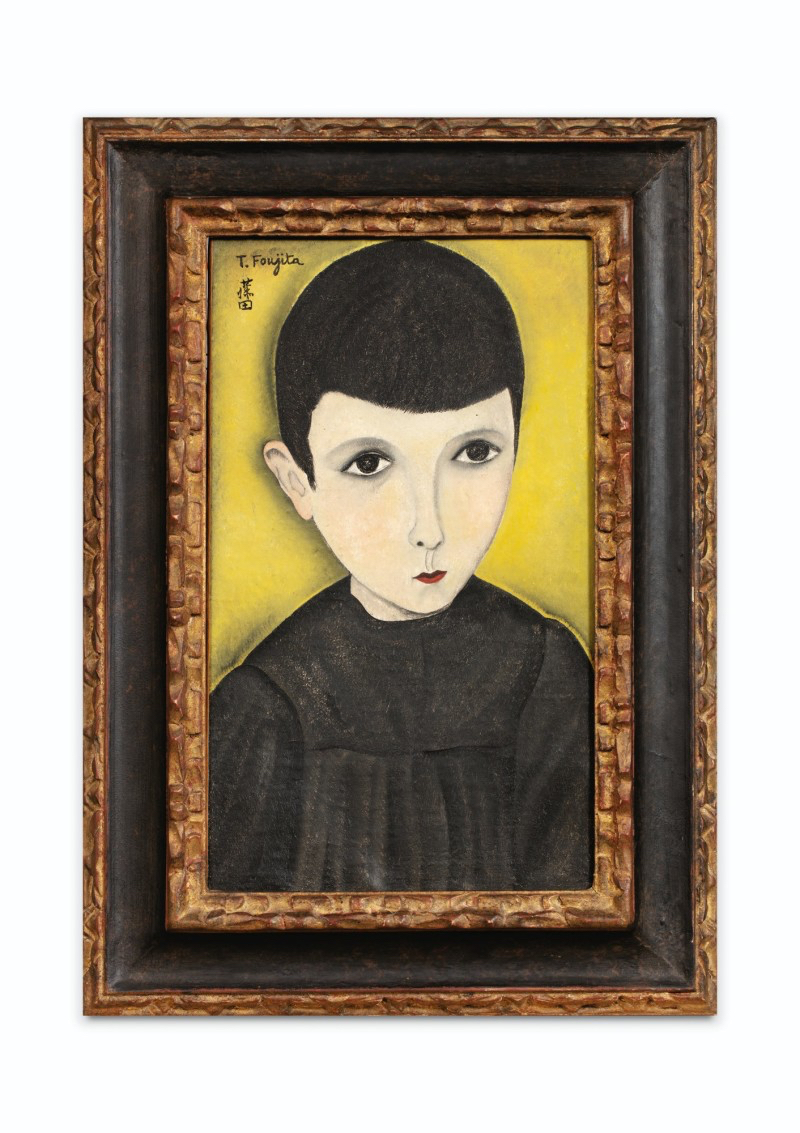

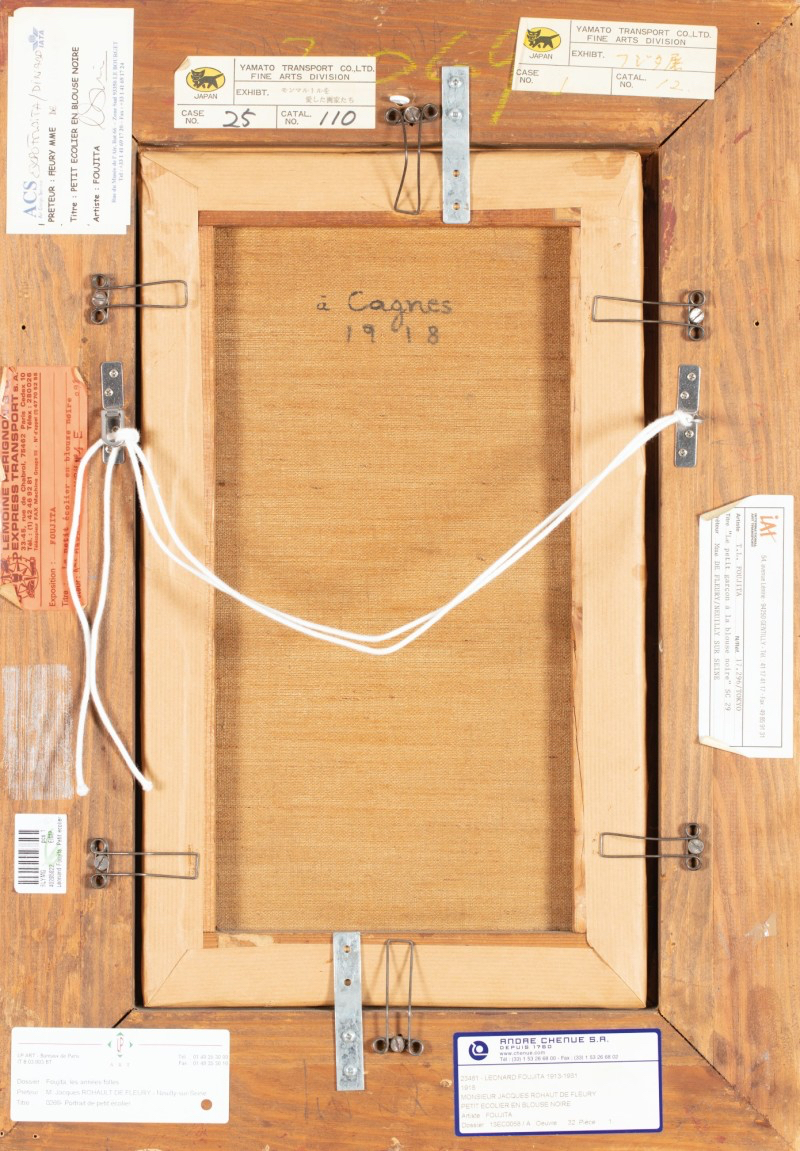
up-date:
Estimate:
250,000 – 350,000 EUR
LOT SOLD:
496,500 EUR
LÉONARD FOUJITA
1886 – 1968
PETIT ÉCOLIER EN BLOUSE NOIRE OU PORTRAIT DE PETIT ÉCOLIER
signed T. Foujita and signed in Japanese (upper left); situated à Cagnes and dated 1918 (on the reverse)
oil on canvas
Painted in 1918.
41,2 x 24,4 cm; 16¼ x 9⅝ in.
Condition Report
The canvas is not lined and slightly undulating. Examination under UV light reveals a small dot of retouching (approx. 0.8 cm wide) located 4 cm from lower edge and 9 cm from left edge, a small line of retouching (approx. 2 cm long) to the centre of the lower edge and a few smaller lines and dots of retouching in places, most predominately along the extreme edges. There is some frame rubbing, associated with minor paint losses, along the extreme edges notably to the right part of the lower edge. There are a few thin lines of stable craquelure in places (only visible under close inspection), notably to the model’s proper right cheek. This work is in overall very good condition.
Exhibited
Tokyo, Odakyu Grande Galerie (& travelling in Japan), Léonard Foujita, exposition commémorative du centenaire de la naissance de Tsuguharu-Léonard Foujita, 1986-87, no. 12, illustrated in the catalogue np.
Dinard, Palais des Arts, Foujita, le maître japonais de Montparnasse, 2004, no. 30, illustrated in the catalogue p. 57
Chilleurs-aux-Bois, Château de Chamerolles, Foujita et ses amis du Montparnasse, 2010, illustrated in the catalogue p. 68
Shizuoka, Shizuoka City Museum of Art (& travelling in Japan), Léonard Foujita et Paris, 1913-1931: le centenaire de son arrivée à Paris: Paris accueille et glorifie Foujita, 2013-14, no. 36, illustrated in the catalogue p. 76
Sakura, DIC Kawamura Kinen Bijutsukan (& travelling in Japan), Léonard Foujita et ses modèles, 2016-17
Paris, Musée Maillol, Foujita, peindre dans les années folles, 2018, no. 45, illustrated in the catalogue p. 93
Catalogue Note
In April 1918, Foujita stayed in the hilltop village of Haut-de-Cagnes with Amedeo Modigliani and Chaïm Soutine at the invitation of their dealer and friend, Léopold Zborowski. They shared a Provencal house for over a month and even had the chance to meet Renoir at his estate, Les Collettes. Zborowski’s idea was for the artists to escape the bombings in Paris and to offer their works for sale in the palaces of the French Riviera. The visit was joyous, peaceful, and also a time for study. Children from the village spontaneously posed for Foujita and Modigliani, who painted charming, luminous, yet strikingly different portraits of them.
Foujita, who would go on to become a virtuoso painter in the 1920s with a palette of pearly white tones, uses black in a masterful way here.
With shades of grey, the artist clothes the child, brushes his short, downy hair, and defines the contours of his face, setting it off against the sunny, Mediterranean-yellow background. The perilous exercise is skilfully handled; Foujita brings out the child’s soft yet piercing look, his eyes following the viewer in a magnetic way.

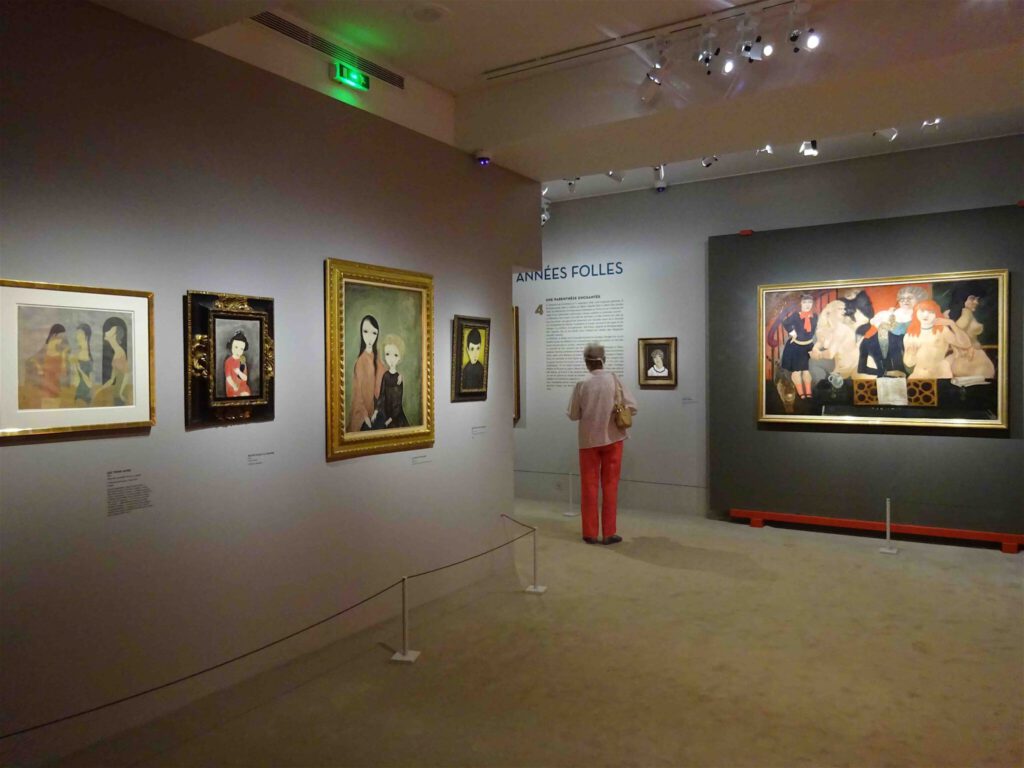

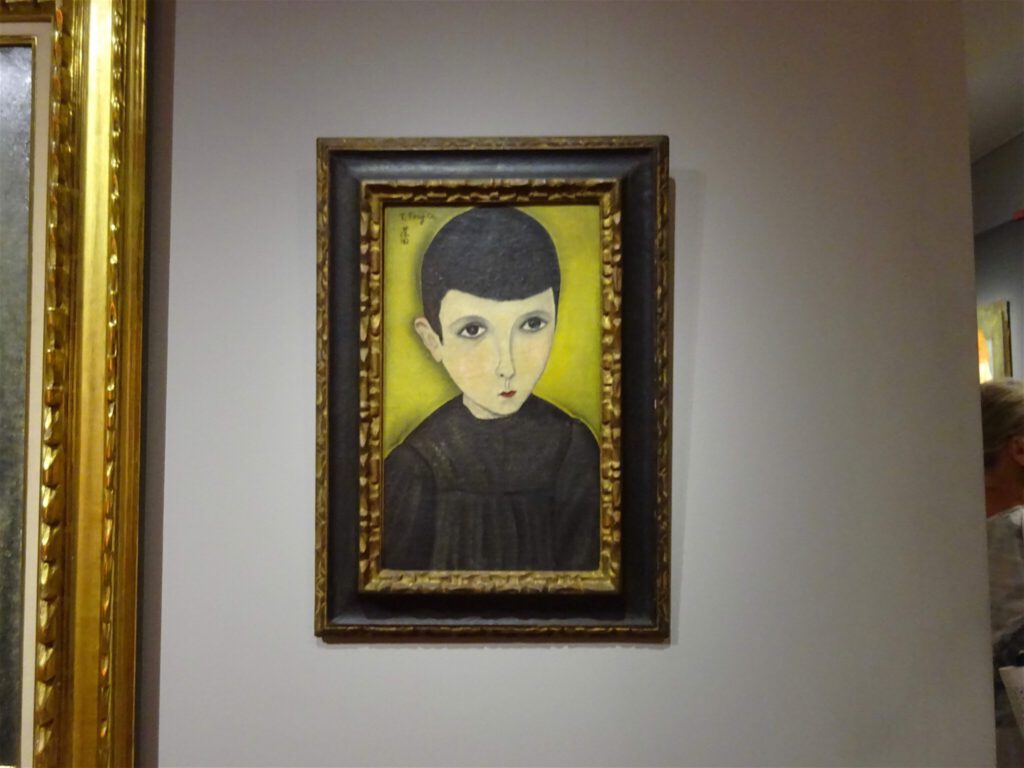
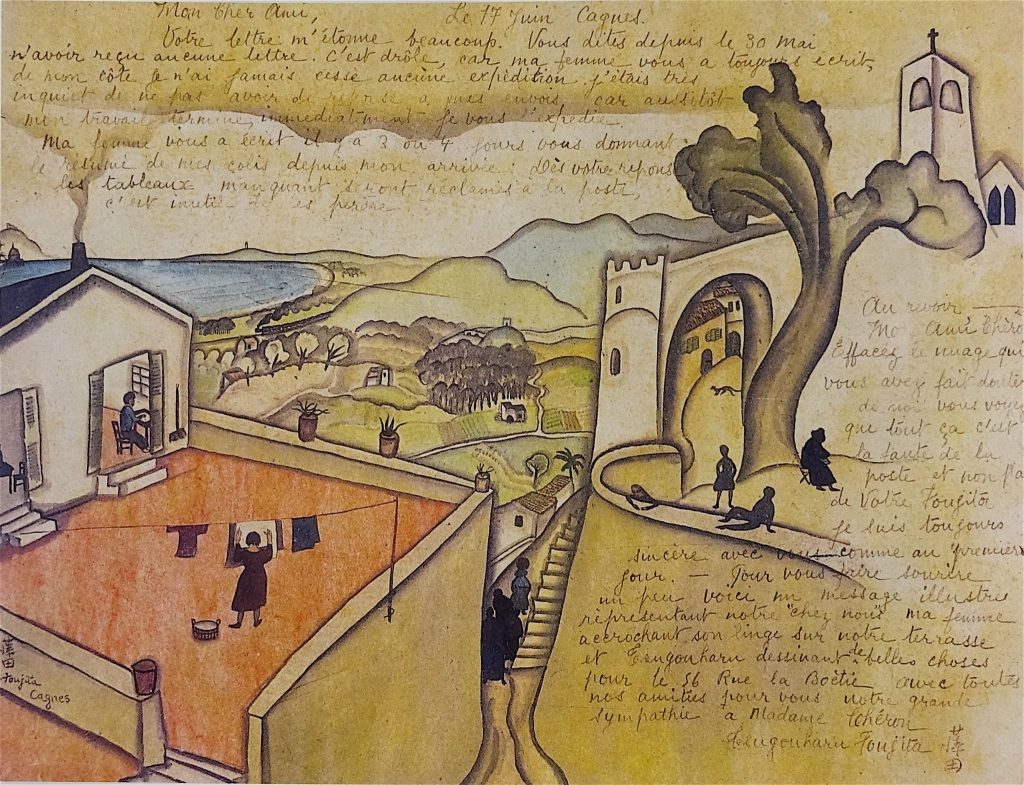
藤田嗣治 Léonard Foujita “Lettre au marchand Georges Chéron” 1918
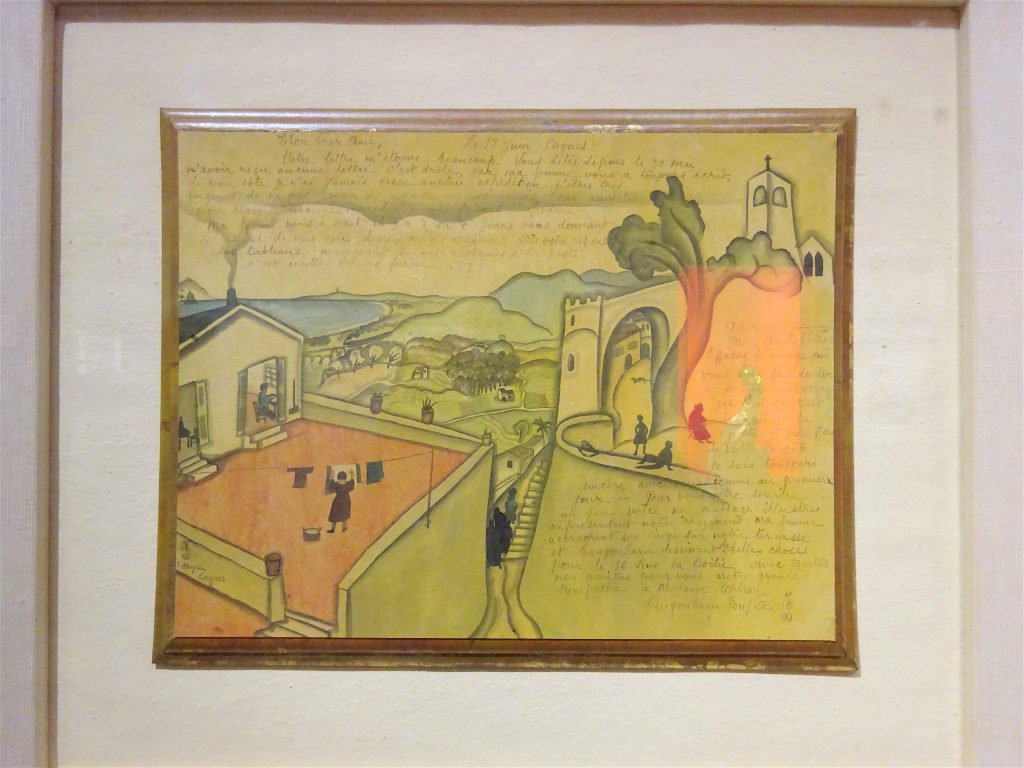
藤田嗣治 Léonard Foujita “Lettre au marchand Georges Chéron” 1918

藤田嗣治 Léonard Foujita “Cagnes-sur-Mer” 1918 (Kunstmuseum Luzern, Depositum der Stadt Luzern)
Plate: “Tsugouharu Foujita Eigentum der Einwohnergemeinde Luzern Sammlung Goffin”
Check the questionable provenience:
Albert Goffin 1877-1958
from wikipedia:
Albert Goffin (died 1958) was a Belgian banker, civil servant and governor of the National Bank of Belgium (NBB) from 16 July until 27 November 1941.
He started his career at the NBB in 1907. In 1922, he became administrator delegate at the Banque Liégeoise and administrator of the Banque de Bruxelles in Liège in 1931 after which he returned to the NBB in 1934, where he was in charge of the discount operations. In 1941, he was appointed as governor of the NBB by Secretary General Plisnier, but the Pierlot government in exile at London did not recognise his appointment. On 27 November 1941, Georges Theunis was appointed instead, by the Pierlot-government. After the end of World War II, Goffin was obliged to resign, which brought an end to his career.
https://en.wikipedia.org/wiki/Albert_Goffin
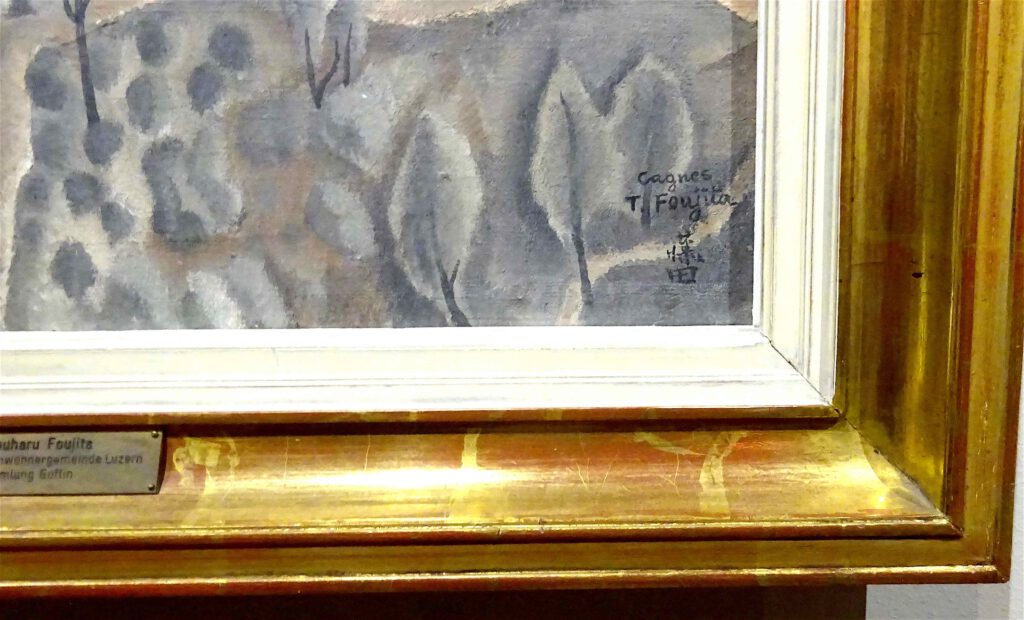
——-
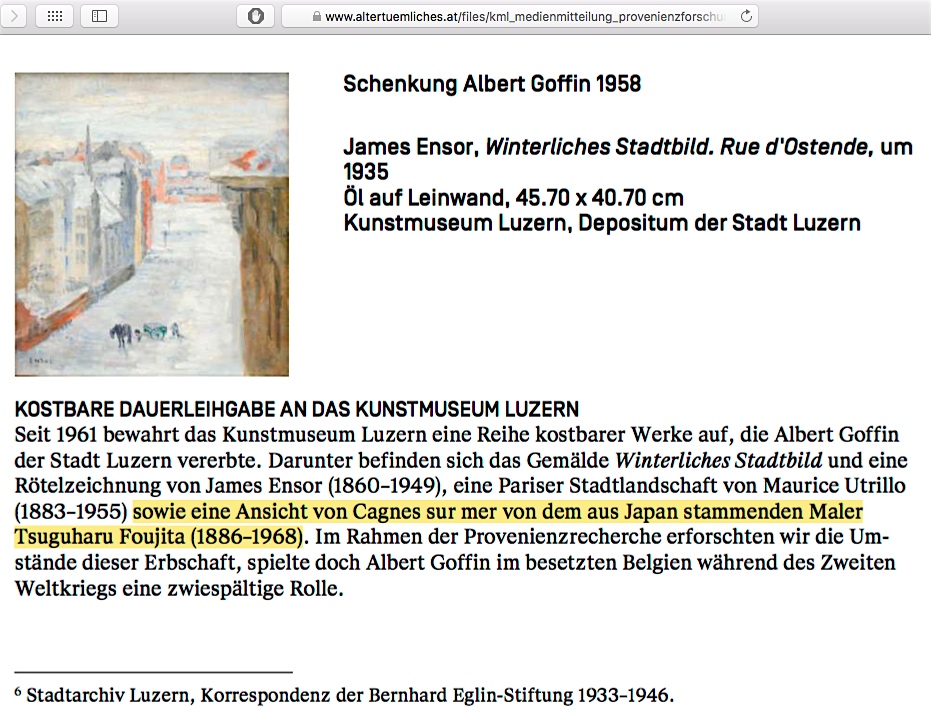
Schenkung Albert Goffin 1958
James Ensor, Winterliches Stadtbild. Rue d’Ostende, um 1935
Öl auf Leinwand, 45.70 x 40.70 cm
Kunstmuseum Luzern, Depositum der Stadt Luzern
KOSTBARE DAUERLEIHGABE AN DAS KUNSTMUSEUM LUZERN
Seit 1961 bewahrt das Kunstmuseum Luzern eine Reihe kostbarer Werke auf, die Albert Goffin der Stadt Luzern vererbte. Darunter befinden sich das Gemälde Winterliches Stadtbild und eine Rötelzeichnung von James Ensor (1860–1949), eine Pariser Stadtlandschaft von Maurice Utrillo (1883–1955) sowie eine Ansicht von Cagnes sur mer von dem aus Japan stammenden Maler Tsuguharu Foujita (1886–1968). Im Rahmen der Provenienzrecherche erforschten wir die Um- stände dieser Erbschaft, spielte doch Albert Goffin im besetzten Belgien während des Zweiten Weltkriegs eine zwiespältige Rolle.
EIN UNERWARTETER BESUCH
Am 23.03.1956 erhielt Paul Kopp, der Stadtpräsident Luzerns, einen unerwarteten Besuch:(7) Albert Goffin aus Brüssel sprach bei ihm mit einem überraschenden Angebot vor. Albert Goffin wolle, so schrieb Paul Kopp später, «aus einer alten Liebe zur Schweiz und insbesondere zur Stadt Luzern» sein Vermögen testamentarisch der Stadt vermachen. Paul Kopp nahm das Ange- bot erfreut auf, konnte allerdings nicht allein darüber befinden. Ein halbes Jahr später wiederholte Albert Goffin bei einem weiteren Besuch sein Angebot und erklärte, dass er in den vergan- genen Jahrzehnten die Schweiz und Luzern regelmässig besucht und hier einige Bekannte habe. Seine Verbundenheit mit der Stadt am Vierwaldstättersee habe ihn dazu veranlasst, sie als Universalerbin einzusetzen.
WER WAR ALBERT GOFFIN?
Als längere Zeit keine Nachrichten mehr von Albert Goffin eintrafen, nahm Paul Kopp Kontakt mit dem Schweizer Botschafter in Brüssel auf und erkundigte sich nach dem Befinden seines Besuchers. Der Stadtpräsident fragte auch an, ob der Botschafter nicht diskret Erkundigungen über den Hintergrund Goffins und seine finanzielle Situation einholen könne. Offenbar wollte man nicht die Katze im Sack erben. In seinem Antwortschreiben verwahrte sich der Botschafter vehement gegen dieses Ansinnen; schliesslich könne er nicht die Dienste einer Auskunftei leisten. Überdies laufe die Stadt Gefahr, das Erbe zu verlieren, wenn der Erblasser von den heimlichen Erkundigungen erfahre. Schliesslich sei der Betreffende in Belgien wohlbekannt.
Albert Goffin (1877–1958) war in seiner Heimat eine bekannte, wenn auch nicht unumstrittene Person:(8) Er wurde 1877 geboren und als 19-Jähriger bei der Belgischen Nationalbank angestellt. Die Heirat mit der wohlhabenden Marthe Pauline Goldschmid dürfte seine Karriere befördert haben. Ihr Bruder Fernand Hautain war von 1923 bis 1926 Gouverneur der Nationalbank. Nach seiner Tätigkeit als Geschäftsführer bei anderen belgischen Banken wurde Albert Goffin 1934 zum Direktor der Nationalbank ernannt.
EIN KOLLABORATEUR?
Während andere leitende Angestellte der Nationalbank nach Frankreich auswichen, blieb Albert Goffin nach der deutschen Besetzung im Mai 1940 in Belgien. Das den deutschen Besatzern unterstellte Finanzministerium ernannte ihn am 16.07.1941 zum Gouverneur der Nationalbank. Die Exilregierung unter Hubert Pierlot in London erkannte ihn jedoch nicht an und argumen- tierte, dass sich die rechtmässige belgische Regierung nicht in Belgien befinde und daher auch keine personellen Besetzungen vornehmen könne. Überdies sei auch die Nationalbank nicht mehr in Belgien. Denn diese hatte inzwischen Geld und Wertpapiere von Ostende nach England evakuiert.
Die nach dem Krieg veröffentlichten Dokumente zeigen, dass Albert Goffin sich im Rahmen seiner beschränkten Möglichkeiten für die Zivilbevölkerung einsetzte, aber auch zur Zusam- menarbeit mit den deutschen Besatzern gezwungen war. Noch während der Kämpfe, die am 17.09.1944 zur Befreiung Belgiens führten, fanden Gespräche zwischen Albert Goffin und Vertretern des Finanzministeriums der zurückgekehrten Exilregierung statt, aufgrund derer Albert Goffin demissionierte und sich ins Privatleben zurückzog.
EIN REICHES GESCHENK
Man kann nur vermuten, dass Albert Goffin sich für sein Ausharren im besetzten Belgien unge- recht behandelt fühlte und deswegen sein Eigentum nicht seiner Heimat überlassen wollte. Auf jeden Fall setzte er die Stadt Luzern als Universalerbin ein, sodass diese nach seinem über- raschenden Tod am 19.06.1958 in den Besitz seines Vermögens, seiner Liegenschaften in Brüssel und seiner umfangreichen Kunstsammlung kam.
(7) Der gesamte Vorgang ist in den Akten im Stadtarchiv Luzern gut dokumentiert.
(8) Zu Biografie und Tätigkeit von Albert Goffin siehe: Valery Janssens, De beheerders van ons geld. Negentien gouverneurs can de Nationale Bank van België, Tielt: Lannoo, 1997, S. 141–145.
Die Regelung des Nachlasses zog sich einige Zeit hin, weil die Erbschaft mit verschiedenen Auflagen verbunden war und der belgische Staat die Summe von umgerechnet über 200’000 CHF nicht einfach so freigeben wollte. Albert Goffins Kunstsammlung, bestehend aus 40 Gemälden und Stichen, wurde jedoch schon im Juli 1960 nach Luzern gebracht. Luzern bewahrt das Andenken des grosszügigen Spenders mit einer Bronzeplastik sowie einer Gedenktafel am General Guisan-Quai.
Die Recherche zu Albert Goffins Rolle während der Besatzungszeit hat sich zwar als weniger brisant herausgestellt, als anfänglich befürchtet, aber es bleibt abzuklären, unter welchen Umständen und wo Albert Goffin die Werke von Ensor, Foujita und Utrillo erworben hat. Dies ist Teil der weitergehenden Forschung. Neue Erkenntnisse veröffentlichen wir fortlaufend auf der Sammlung online.
https://www.altertuemliches.at/files/kml_medienmitteilung_provenienzforschung.pdf
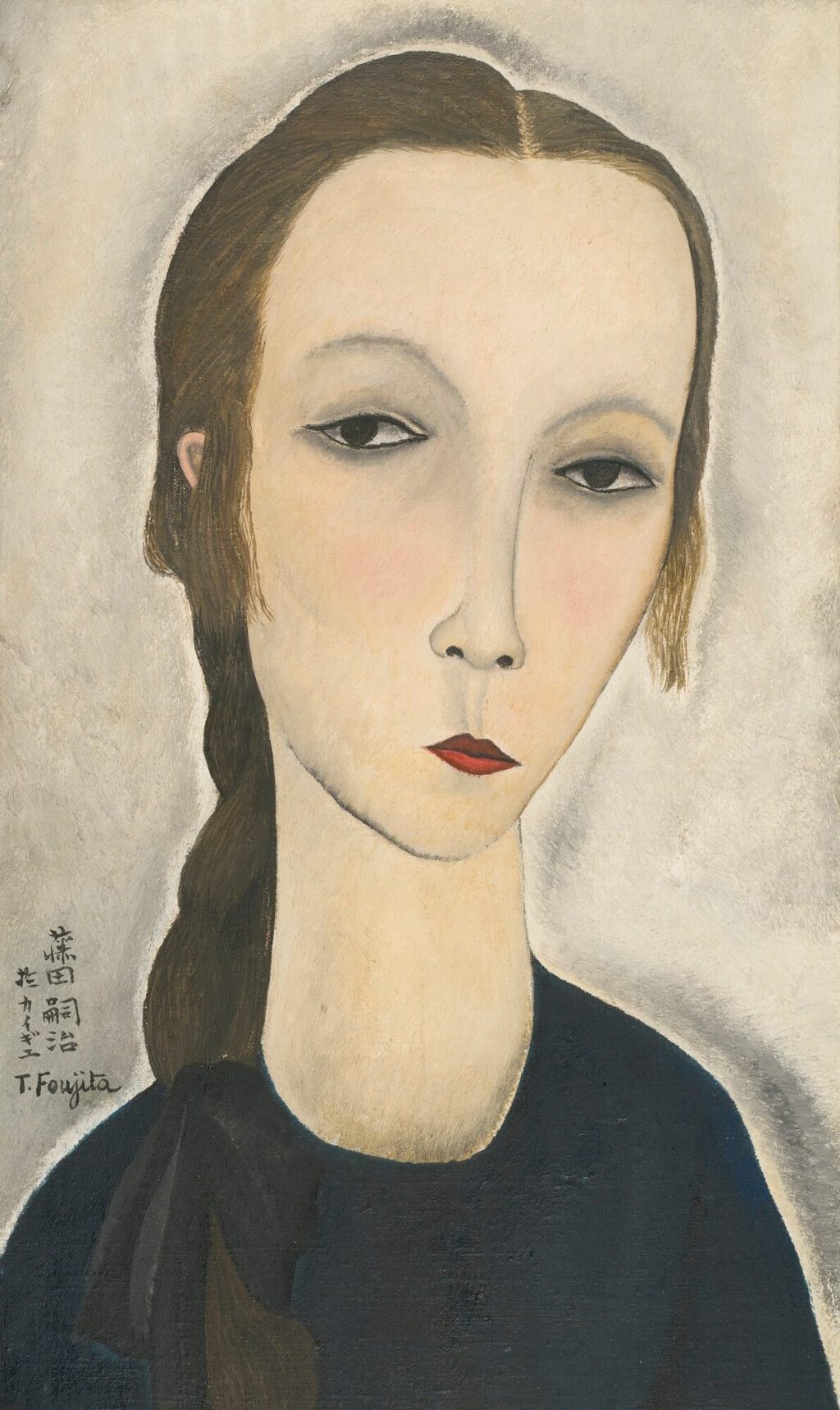
Tsuguharu Foujita
1886-1968
PORTRAIT DE JEUNE FEMME (HANKA ZBOROWSKA)
Signed T. Foujita and in Japanese and inscribed Cagnes in Japanese (lower left); dated 1918 and inscribed Cagnes (on the reverse)
Oil on canvas
16 by 9 3/8 in.
41 by 24 cm
Painted in Cagnes in 1918.
Foujita painted Portrait de jeune femme (Hanka Zborowska) in 1918, just a year after he had begun to achieve critical and financial success with his first two solo exhibitions at Galerie Chéron in Paris. In the spring of 1918 Foujita and his wife Fernande Barrey travelled to Cagnes-sur-Mer, a village near Nice in the South of France. Here, sheltered from the bombardments that were a part of daily life in Paris and Northern France during World War I, they shared a house with Amedeo Modigliani, Jean Hébuterne, her mother Eudoxie, Chaïm Soutine, Léopold Zborowski and his wife Hanka Zborowska. “Foujita, Soutine and Modigliani placed their easels before the same landscapes; the same models sat for one then the others. Similar cypresses, roofs and facades appeared in their compositions. The children who posed for one, posed for the others. Each of the three artists kept their originality, while at the same time they observed the others and appreciated their differences” (Sylvie Buisson, op.cit., p. 70, translated from the French).
Hanka Zborowska, a Polish aristocrat descended from a wealthy family, was studying in Paris to become a teacher when she met Zborowski. Hanka and Leopold moved next to many artists’ studios in the rue Joseph Bara in 1916. Zborowski set out to represent several unknown artists including Modigliani, Soutine & Utrillo. During the spring and summer of 1918 as Modigliani, Soutine and Foujita painted and lived together Hanka Zborowska became the subject of numerous portraits (see figs. 1 & 2). Zborwska, in fact, sat for Modigliani on multiple occasions: “Her distinctive, dark beauty and elegance inspired a number of Modigliani’s most important ‘classical’ portraits, in which his line becomes more sinuous” (Modigliani and His Models (exhibition catalogue), Royal Academy of Arts, London, 2006, p. 153). So too in Foujita’s Portrait de jeune femme (Hanka Zborowska) is the oval shape of the face, arched brows and almond-shaped eyes brought into focus. The lightly colored background contrasts with the model’s black dress and the black bow at the end of her hair, while white highlights delineate the figure further, pushing her out from the picture plane.
https://www.sothebys.com/en/auctions/ecatalogue/lot.233.html/2014/impressionist-modern-art-day-sale-n09140
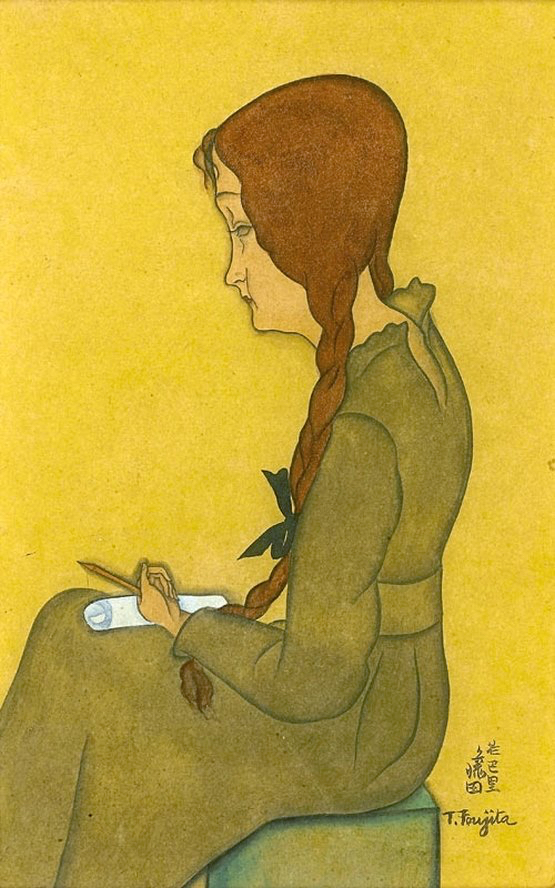
(painted in Paris)
Modigliani and Foujita: There was one episode—dwelt on at length in all the books—in which Foujita had played a key role. This was a trip to the south of France organized in 1918 by the Polish poet Léopold Zborowski, who had the idea that his artist-friends could sell pictures there to rich holiday-makers. Foujita and his wife went along; so did Soutine, Modigliani, and Jeanne Hébuterne, Modigliani’s lover. The trip was not, however, a success. Modigliani did sell a few pictures (at 25 francs each). But mostly the group had to survive on the advances that Foujita (the most successful among them) had secured from his Paris dealer. By the time the final reckoning arrived even these had run out, and their landlord confiscated all their baggage in lieu of payment. (Within a year and a half Modigliani was dead; Jeanne Hébuterne committed suicide two days after the death of her lover.) Foujita afterwards noted dryly that had the south-of-France landlord confiscated their paintings instead of their baggage he’d have become a multimillionaire a few years later.
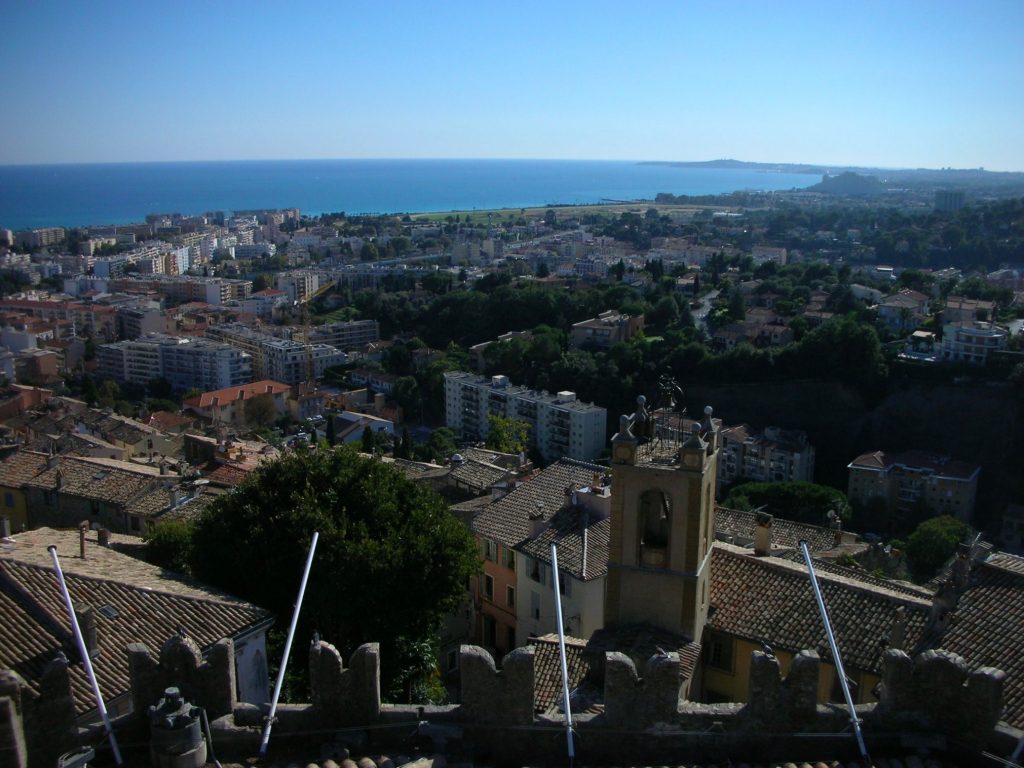


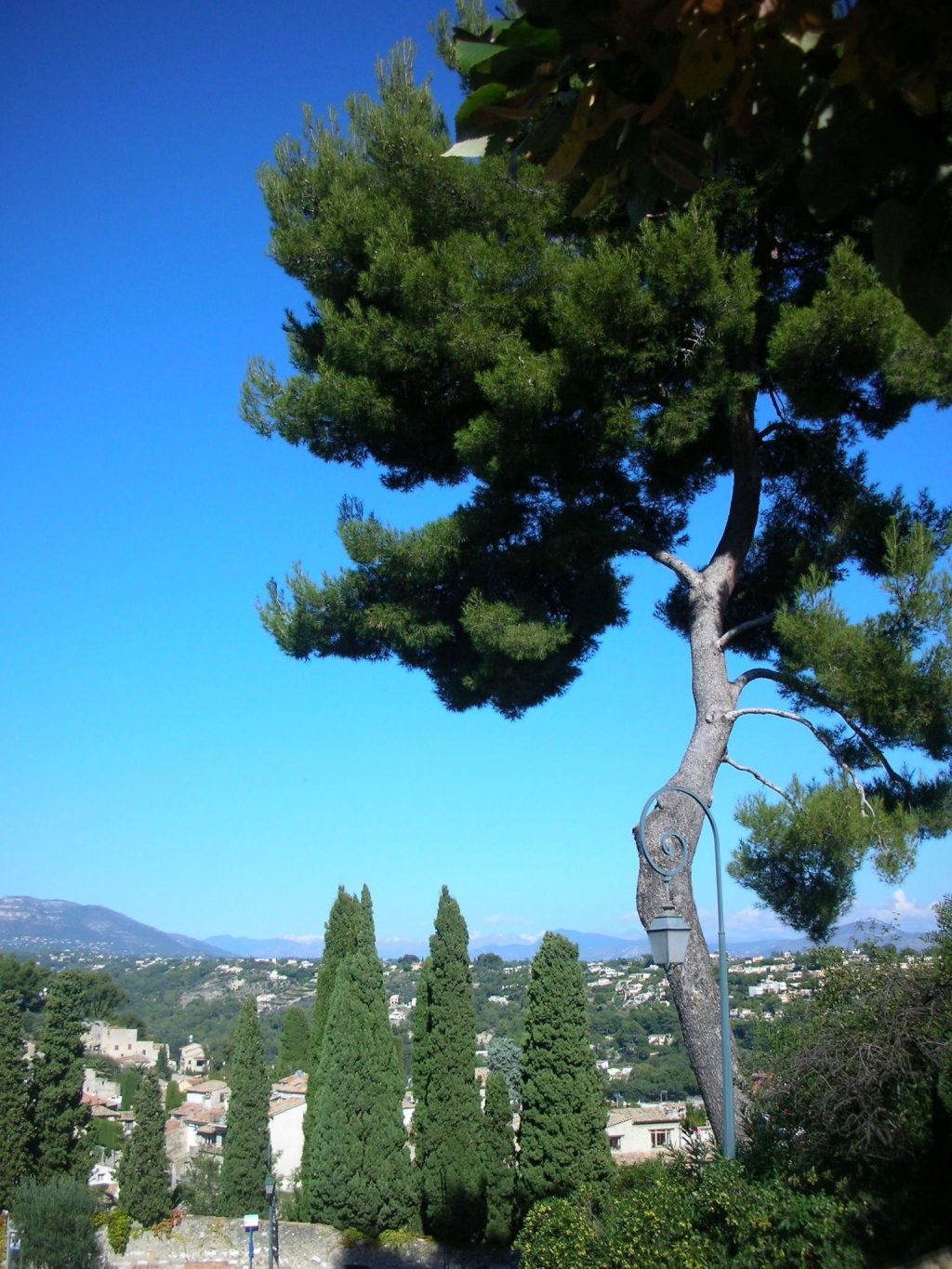
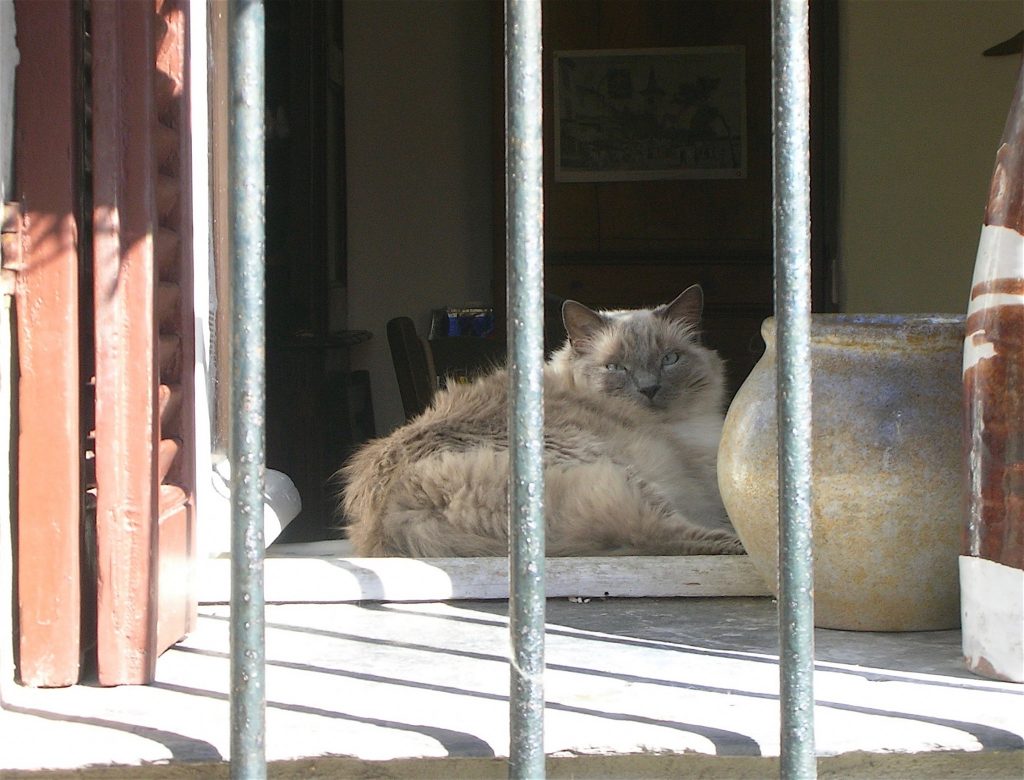
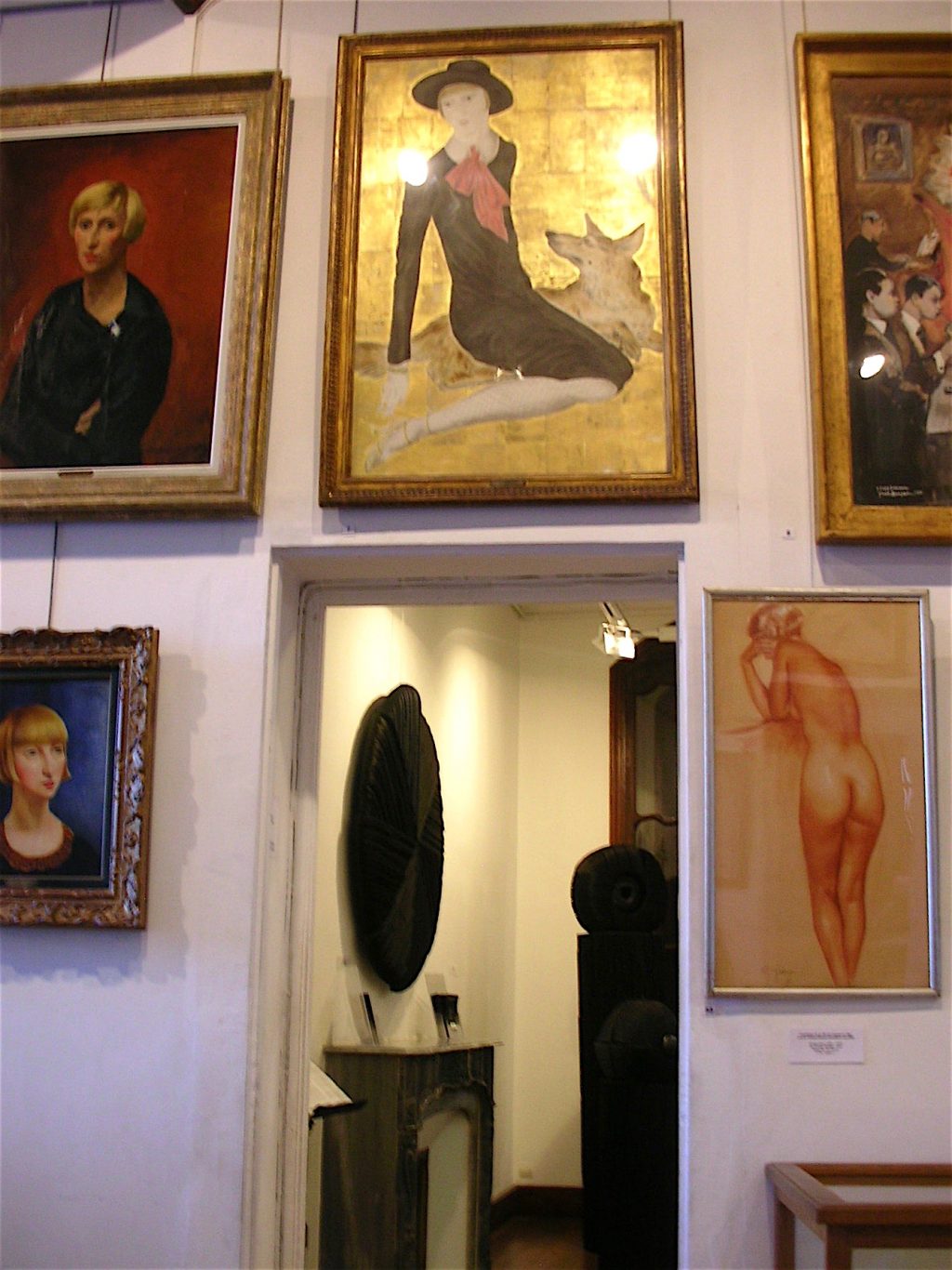

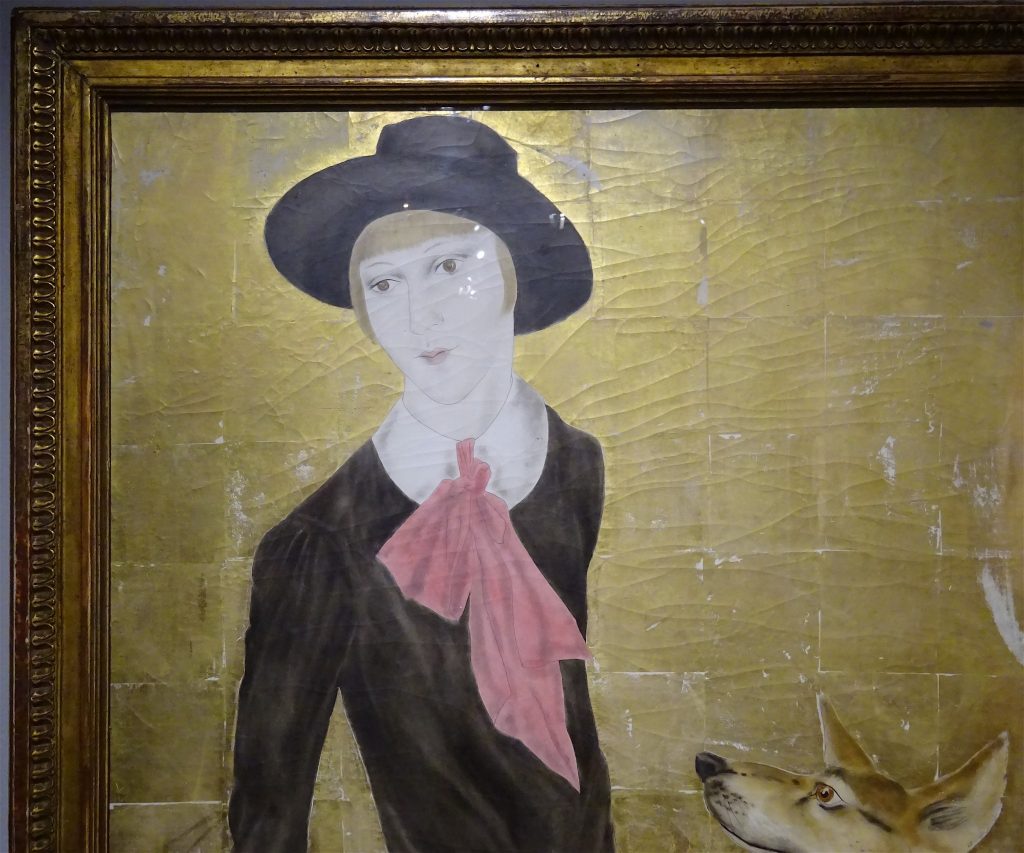
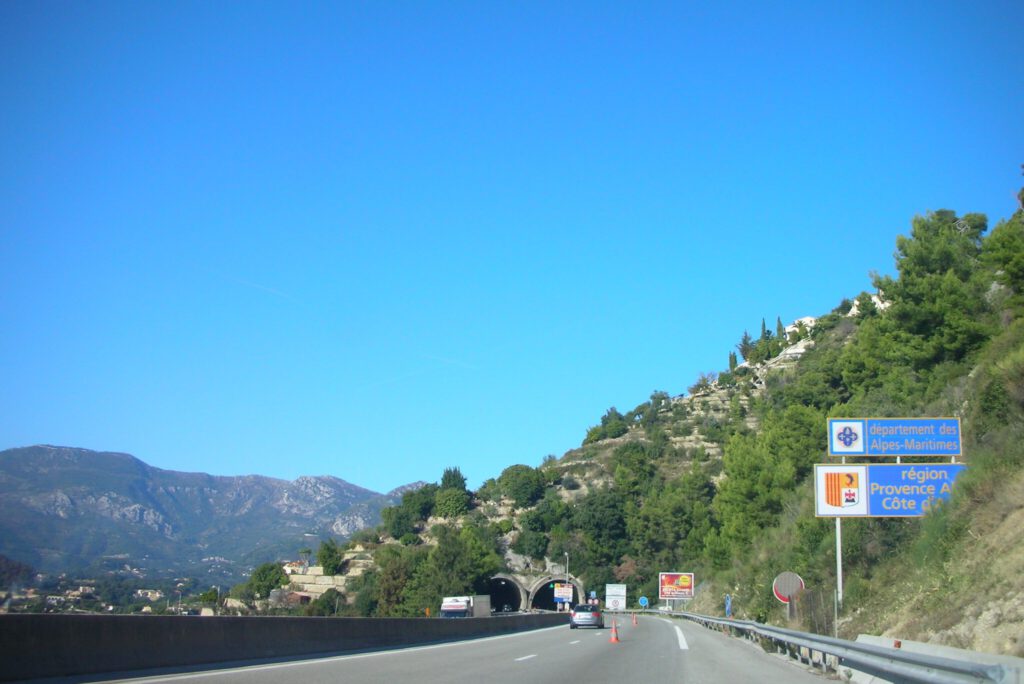
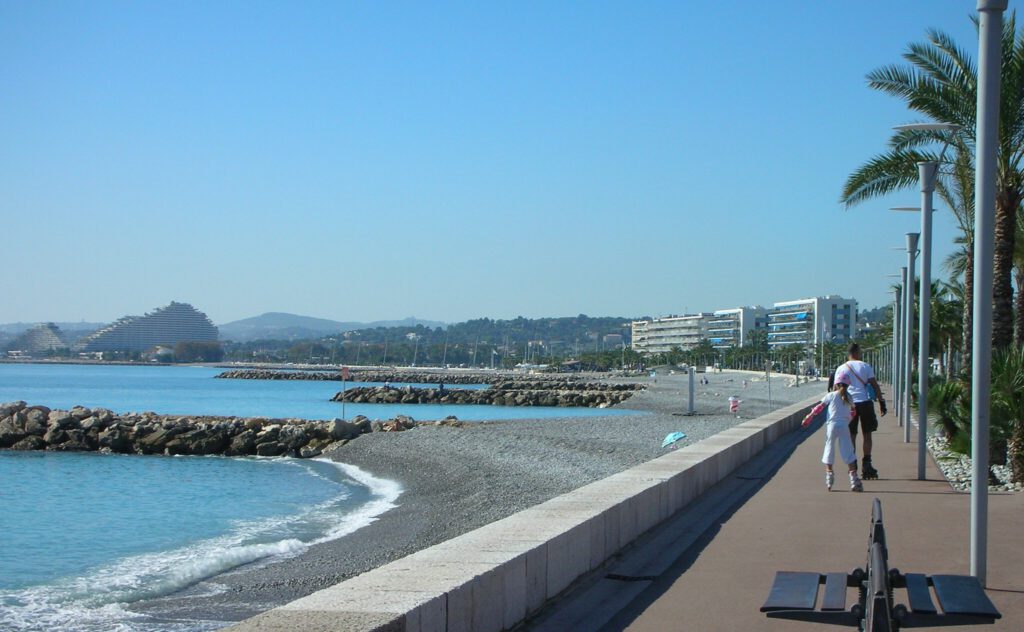
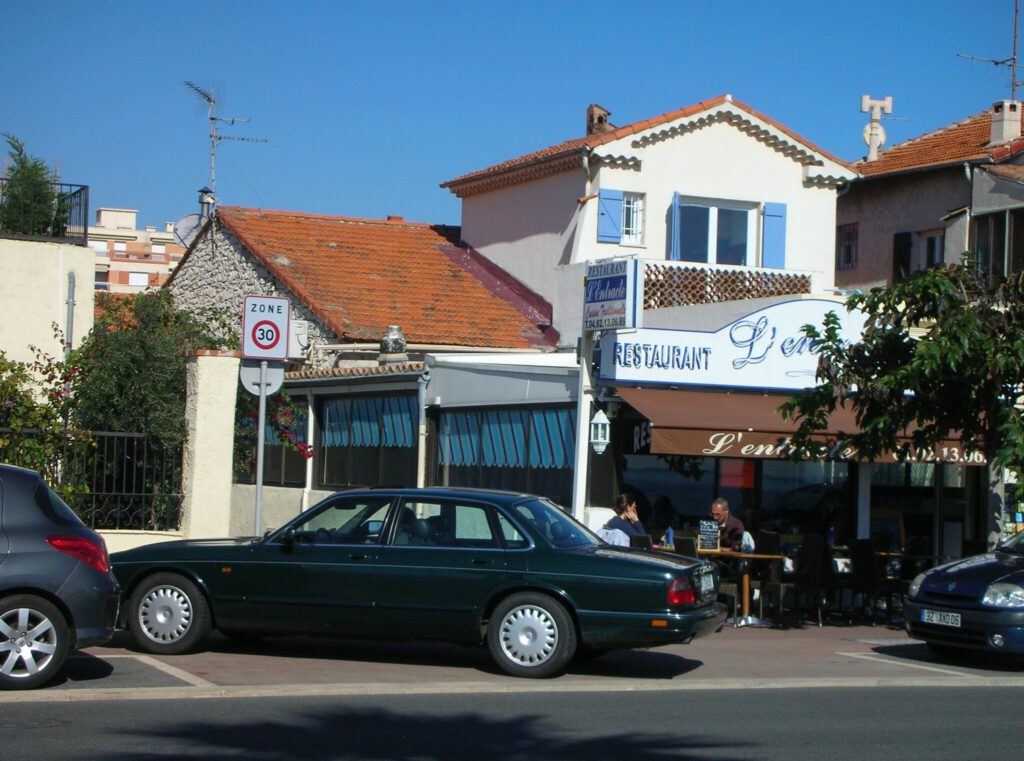
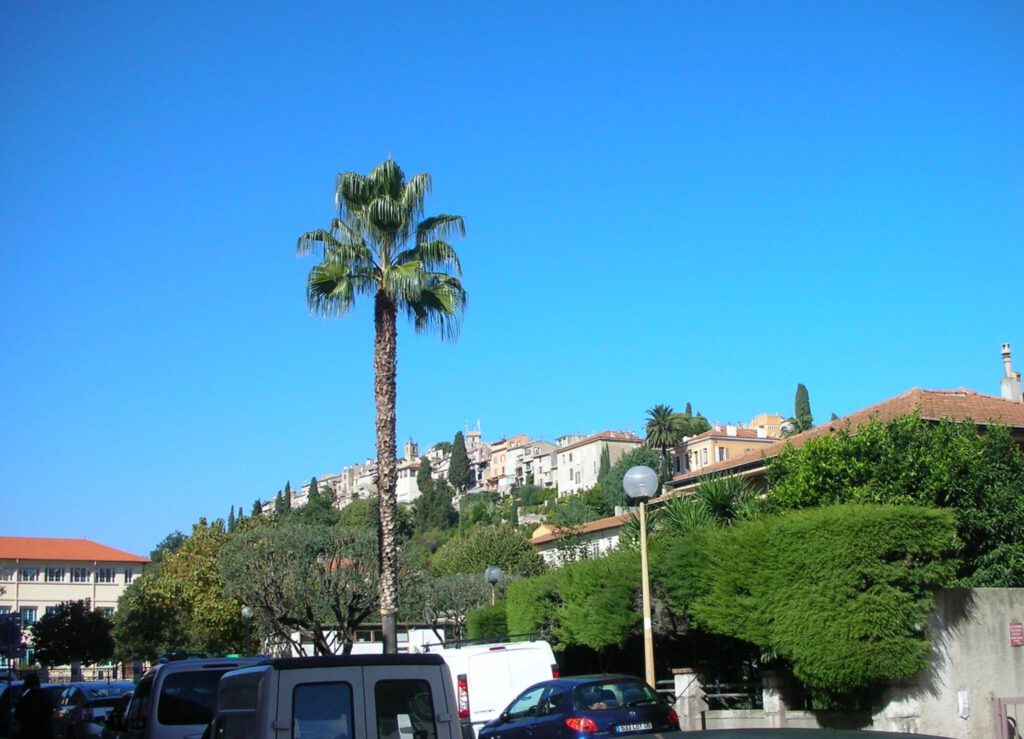
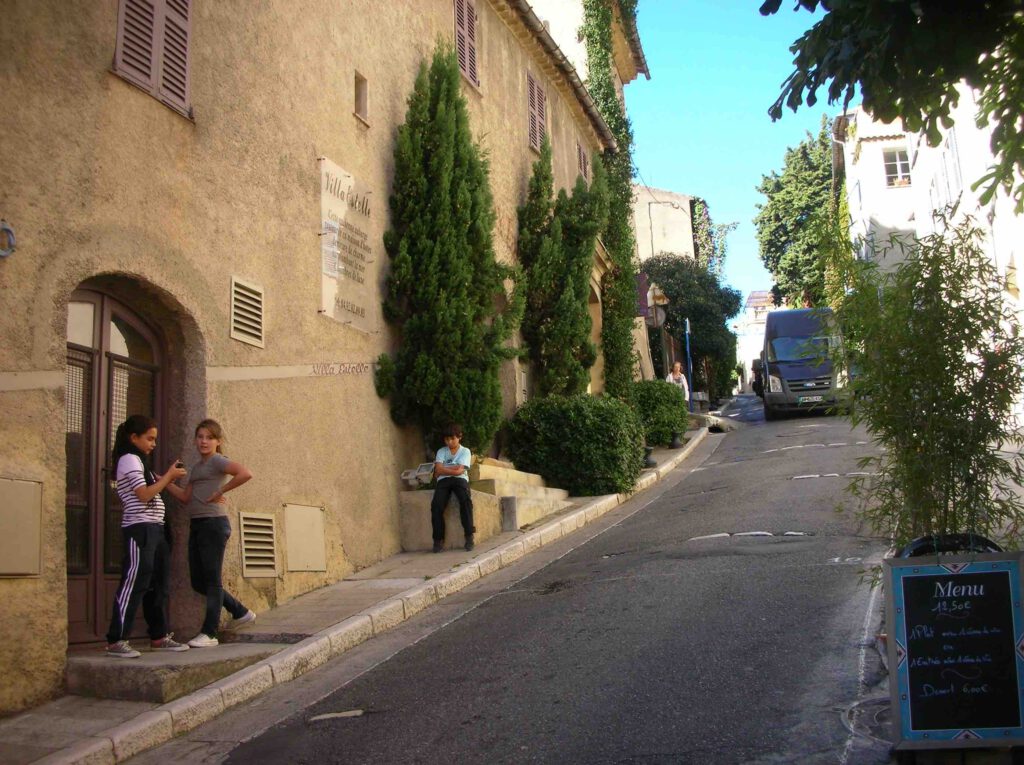
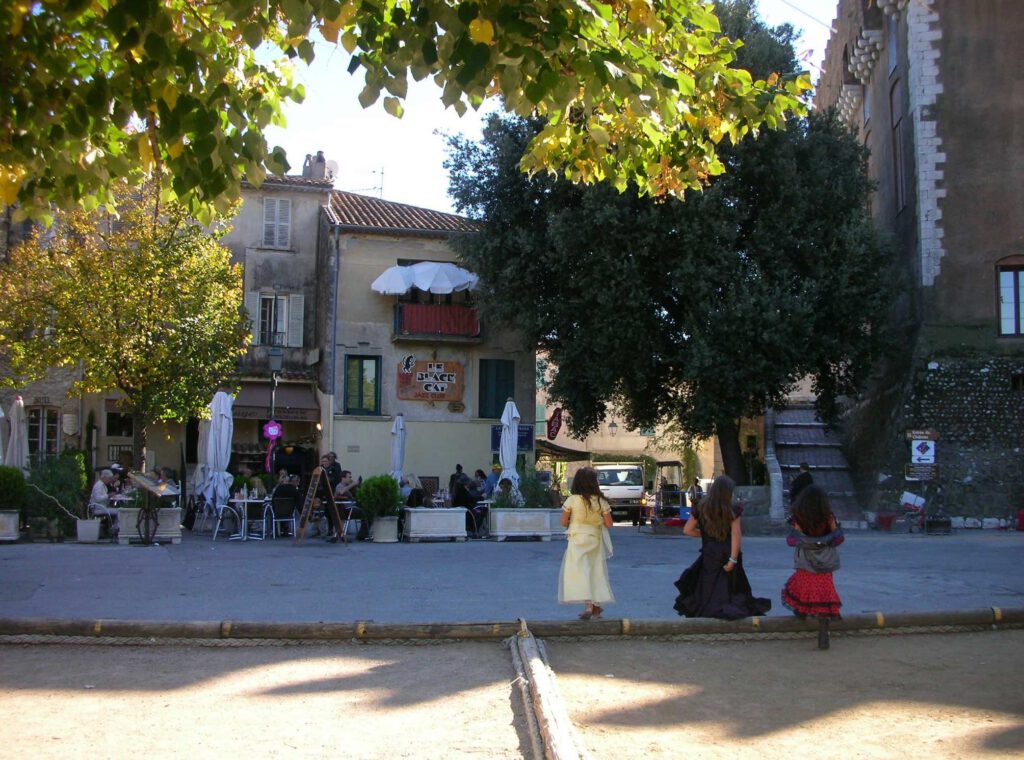
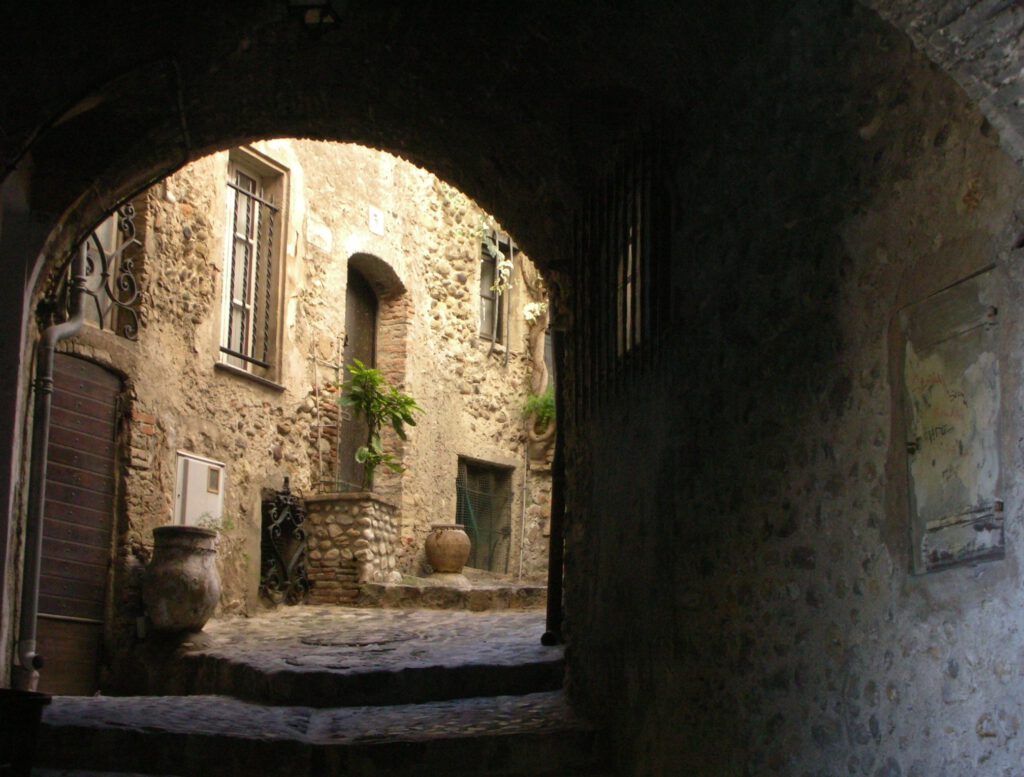

Château-Musée Grimaldi

